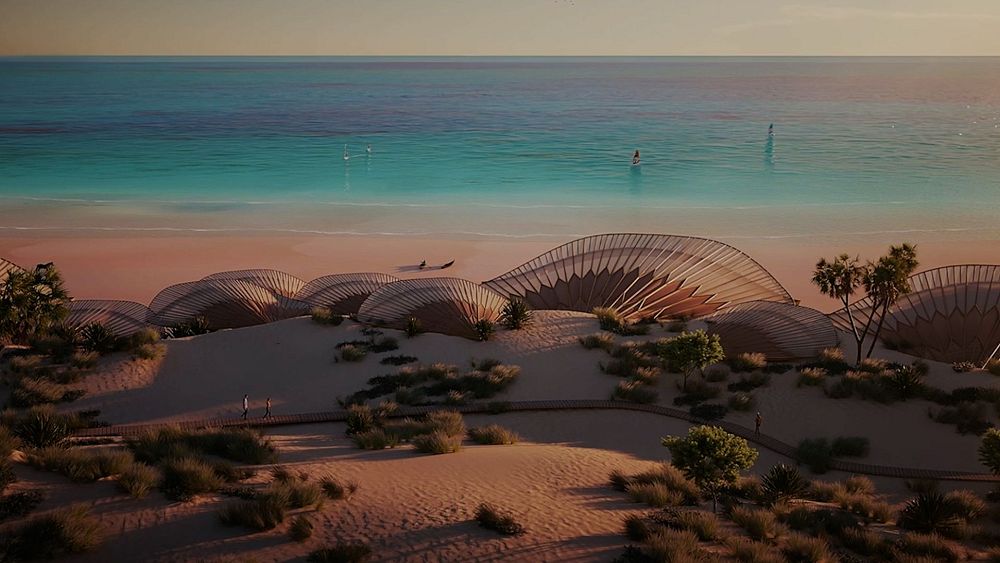Saudi Arabia’s 28,000 square kilometer development on the Red Sea coast focuses on two destinations: Red Sea Global and Amaala. The project will offer visitors a myriad of luxury hotels, restaurants and outdoor experiences, all with a sustainable attitude.
The developers plan for the entire site to run on 100% solar energy send zero waste to landfill. They are also limiting the number of visitors to one million per year.
Much of the region’s attraction for travelers is its long sandy coasts and azure waters. But what’s beneath the waves might be the most exciting thing of all. Coral reefs and diverse marine life are abundant here and will prove to be a great attraction for water fanatics, especially scuba divers.
So could the vast Red Sea projects turn it into the next big diving destination? Most likely.
Contenuti
ToggleWhy Saudi dive sites will test Egypt’s status
The Red Sea’s confidence in the quality of its dive sites is not unfounded. You just have to look beyond the water Egyptto see some of the most famous diving locations in the world.
Hurghada and Sharm el-Sheik have long been praised by divers as some of the best areas on the planet, boasting numerous shipwrecks, colorful coral, curious geology and an exceptional abundance of marine life.
Being a pristine side of the Red Sea, there is a lot of potential Saudi Arabia. Furthermore, unlike some of Egypt’s more popular resorts, the Red Sea is planning to minimize divers’ impact on coral reefs and exercise tight control over its use.
Galaxae, a subsidiary of Red Sea Global, will oversee all diving activities in the area. Working with the Professional Association of Diving Instructors (PADI), they intend to ensure that sites are not overcrowded and aim to maintain the integrity of the marine ecosystem.
“It’s not open to everyone; dive companies can’t just come and settle,” explains John Pagano, CEO of The Red Sea Group.
“This is all very much under review because we want to ensure that the company’s sustainability ethos is maintained and that we protect this very precious environment.”
What is there for divers to see in the Red Sea in Saudi Arabia?
While Pagano can’t yet name the best sites to see – “We have identified numerous sites; we have an archipelago of 2,500 square kilometers surrounded by a coral reef” – the possibilities are tempting.
Last year, a research study on Al Wajh Lagoon (an area of 2,081 square kilometers comprising 92 islands) revealed an incredible amount of diverse habitats and marine life. Some of these included critically endangered species such as the Halavi guitarfish and the sooty hawk. It also revealed an eight-metre-high coral colony believed to be almost 600 years old.
In the future, there is hope that divers can explore the wreck of the 18th century “merchantman”, believed to be the best preserved wooden shipwreck in the Red Sea. The wreck still contains the cargo from her voyage, including jars, porcelain and some of the spices she carried.
Saudi Arabia is taking a sustainable approach
Pagano also shared some of the efforts developers are making to protect the destination’s best resources, such as mangrove mangals and coral reefs.
“We have committed to growing 50 million new mangrove trees,” he explained. “In fact, the first million that we have already planted are in the process of being transplanted to different locations.”
Mangroves are huge carbon sinks and a valuable resource in the fight against climate change. Wherever developers encounter mangrove fringes, they work around them to maintain the integrity of the valuable trees.
When it comes to protecting coral reefs, builders choose locations strategically to avoid damaging or obscuring existing reefs. They also use silt curtains to avoid disturbing the seabed and prevent silt from settling on corals.
Like many other locations around the world, the Red Sea also employs coral farming to aid in reef rejuvenation.
Perhaps most importantly, the Red Sea (?) resorts will be the largest destination in the world to be powered by 100% renewable energy. As part of the first phase to achieve this goal, a fleet of 750,000 solar panels has already been installed.
Image:Getty Images







